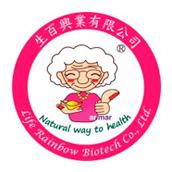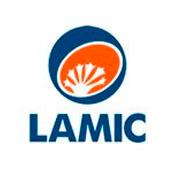Explore all the information on
Aflatoxins
Welcome to the page about Aflatoxins of Engormix; a source of knowledge on Aflatoxins.
Introduction Aflatoxin is a secondary metabolite produced by Aspergillus flavus and Aspergillus parasiticus, and is a highly toxic natural pollutant widely present in feed in humid and hot areas [1, 2]. Among the 12 aflatoxin derivatives detected, the most toxic and carcinogenic aflatoxin B1 (AFB1) is the most common, with significant toxicity to the liver and other organs of animals [3]. In recent years, aflatoxin pollution has caused huge economic losses to breeding...
Comments : 0
Recommendations: 0
Introduction Aspergillus is a filamentous fungus that produces mycotoxins (secondary metabolites), the main contaminants of food and cause adverse effects on human and animal health. The consumption of these toxins may lead to immunosuppressive, mutagenic, and carcinogenic diseases [1]. Various species of the genus Aspergillus produce aflatoxins such as Aspergillus flavus, A. parasiticus A. nomius, A. pseudotamarii, A. bombycis, and A. ochraceoroseus [2,...
Comments : 0
Recommendations: 0
Introduction Cashew trees ( Anacardium occidentale ) are among the main cash crops in Coastal Kenya. They are grown by small-holder farmers in Kilifi, Kwale, Mombasa, Tana River and Lamu counties for their nuts [1]. Processed cashew nuts and cashew nut products are among the most widely traded nut goods globally and their demand is rising rapidly [2]. Despite, the increasing global demand, cashew nut production in Kenya has suffered numerous constraints which are linked to the...
Comments : 0
Recommendations: 0
INTRODUCTION Maize (Zea mays) is one of the main sources for food and feed production in the world (Chulze, 2010). In 2017, more than 197 million hectares were grown with maize worldwide resulting in production yield of 1.13 billion tons of maize (FAOSTAT, 2020). Ensuring the quality and safety of maize for feed and food production is essential. One of the major quality and safety concerns is infection of the maize plants with fungi and the contamination of maize kernels with...
Comments : 0
Recommendations: 0

Victoria Wilson (Seaboard Foods) talks about the process of checking the feed, during this Swine It interview with host Laura Greiner....
Comments : 1
Recommendations: 1

Victoria Wilson (Seaboard Foods) comments on her experience when testing for mycotoxins, during this Swine It interview with host Laura Greiner....
Comments : 1
Recommendations: 0

Don Giesting (Cargill) talked about deoxynivalenol (DON) and zearalenone, during this Swine It interview with host Laura Greiner....
Comments : 0
Recommendations: 0
INTRODUCTION Aflatoxins and other mycotoxin are activators of the aryl hydrocarbon receptor (AhR), are a structurally diverse group of fungal secondary metabolites and a toxigenically and chemically heterogeneous assemblage. They are ubiquitous contaminants in a broad range of agricultural commodities and feed (Table 1) and can contaminate the food supply at any time during production, processing, transport or storage (Bräse et al., 2009). Currently, far more than 400 mycotoxins...
Comments : 0
Recommendations: 0

Chris Parks (Cargill) talked about symptoms and subclinical issues regarding mycotoxin effects on swine health, during this Swine It interview with host Laura Greiner....
Comments : 0
Recommendations: 0

Don Giesting (Cargill) shared his insights on the different effects of several mycotoxins like DON, Zearalenone, Aflatoxin, Fumonisin and Fusarium, during this Swine It interview with host Laura Greiner....
Comments : 0
Recommendations: 0
Wheat farmers in the country have had a very good harvest, and the government is expecting slightly over 1.2 million bags from across the country.
State Department for Crop Development Principal Secretary (PS) Kello Harsama said that they have set the buying price for wheat so that one bag of grade-one wheat will go for Sh5,200 and one bag of grade-two wheat will go for Sh5,100.
Speaking on Tuesday during the media launch of the African Conference on Agricultural Technologies...
Comments : 0
Recommendations: 0
Recent cases requiring the Government Chemist’s help have ranged from genetically modified rice from China to pesticides and mycotoxins in different foods, according to a referee analyst.
Paul Hancock told attendees at the Government Chemist Conference that a variety of technically complex cases are being received with the workload returning to normal after a decline during the COVID-19 pandemic.
The Government Chemist resolves scientific disputes in the food and feed...
Comments : 0
Recommendations: 0
...
Comments : 0
Recommendations: 0
INTRODUCTION The Food and Agriculture Organization (FAO) estimated that 25% of global food crops are contaminated with mycotoxins 1 . Recently, the prevalence of the mycotoxins detected in food and feed crops was reported to be up to 60–80%2 . Aflatoxins are the major ones among all mycotoxins and produced by Aspergillus spp. upon and after infection of crops. They are genotoxic and carcinogenic to animals and humans 3–6 . From the different...
Comments : 0
Recommendations: 0
Introduction Buffaloes are known to be more efficient in utilizing fiber component of coarse feed than cattle and they thrive well on crop residues, cropping native varieties, and agri-by products (Punia and Singh, 2001). Mycotoxin contaminations are serious issues in farming and animal husbandry. So far, various mycotoxins have been identified and over 25% of the world annual grain production is contaminated with mycotoxin (Smith et al., 2016). The optimum temperature for...
Comments : 0
Recommendations: 0
Introduction Aflatoxins are toxic, secondary metabolites synthesized by some fungi species in the genus Aspergillus, mainly those belonging to the species A. flavus, A. nomius, and A. parasiticus (Ismaiel et al., 2020). Aflatoxins are considered the most important mycotoxins, given their carcinogenic and hepatotoxic effects on animals and humans (Bhat et al., 2010). Among several types of aflatoxins, the most frequent ones found as natural contaminants of foodstuffs are aflatoxins...
Comments : 0
Recommendations: 1
1. Introduction Mycotoxins are secondary metabolites produced by specific fungi that are natural contaminants of foods [1]. At appropriate ambient temperature and humidity conditions, mycotoxins can be found at any stage of the production chain. However, the fungi presence does not imply mycotoxin formation [2]. Upon ingestion by ruminants, aflatoxin B1 (AFB1) is partially destroyed in the rumen, whereas the absorbed AFB1 rapidly undergoes metabolic processes in the liver...
Comments : 0
Recommendations: 1
Aflatoxins are fungal metabolites—mainly produced by Aspergillus flavus and Aspergillus parasiticus living in soil—that contaminate crops throughout growth, harvest, storage, transportation, and processing. Aflatoxin B1 is not only the most potent natural carcinogen known, but also the most commonly produced toxic strain. As of 2010, roughly 5 billion people worldwide were estimated to be exposed to high levels of aflatoxins. High consumption levels can result in aflatoxicosis,...
Comments : 0
Recommendations: 0
INTRODUCTION Aflatoxins (AFs) in food and feed are recognized as a public health problem of considerable importance. Williams et al. (2004) estimated that 4.5 billion of the world’s population is exposed to AFs. Because security blankets in crops at pre-harvest and post-harvest level are not as strict as in developed countries, populations of developing countries are the most susceptible to aflatoxicosis illness (Williams et al., 2004). The same problem occurs with milk...
Comments : 0
Recommendations: 0
Introduction Aflatoxins are toxic, secondary metabolites synthesized by some fungi species in the genus Aspergillus, mainly those belonging to the species A. flavus, A. nomius, and A. parasiticus (Ismaiel et al., 2020). Aflatoxins are considered the most important mycotoxins, given their carcinogenic and hepatotoxic effects on animals and humans (Bhat et al., 2010). Among several types of aflatoxins, the most frequent ones found as natural contaminants of foodstuffs are aflatoxins...
Comments : 0
Recommendations: 0





.jpg&w=3840&q=75)









